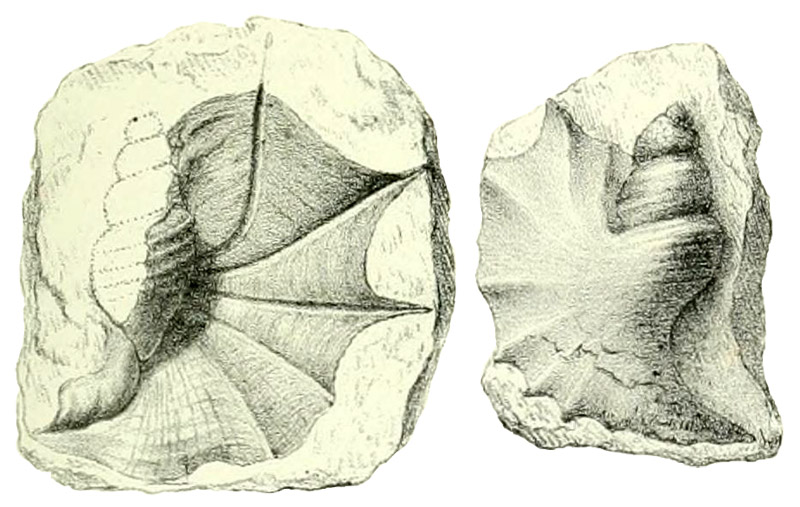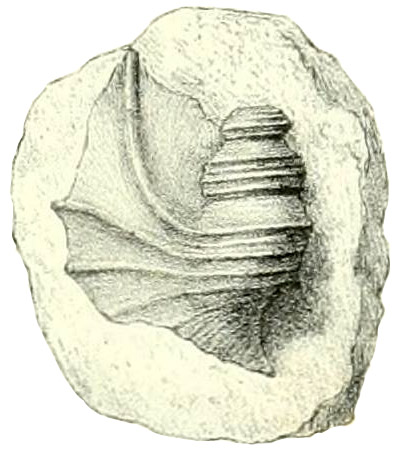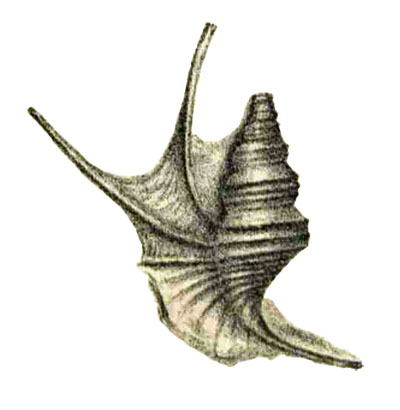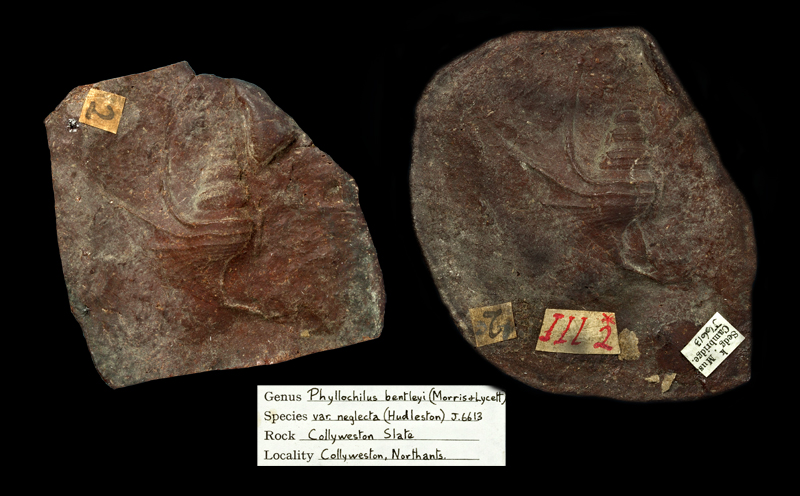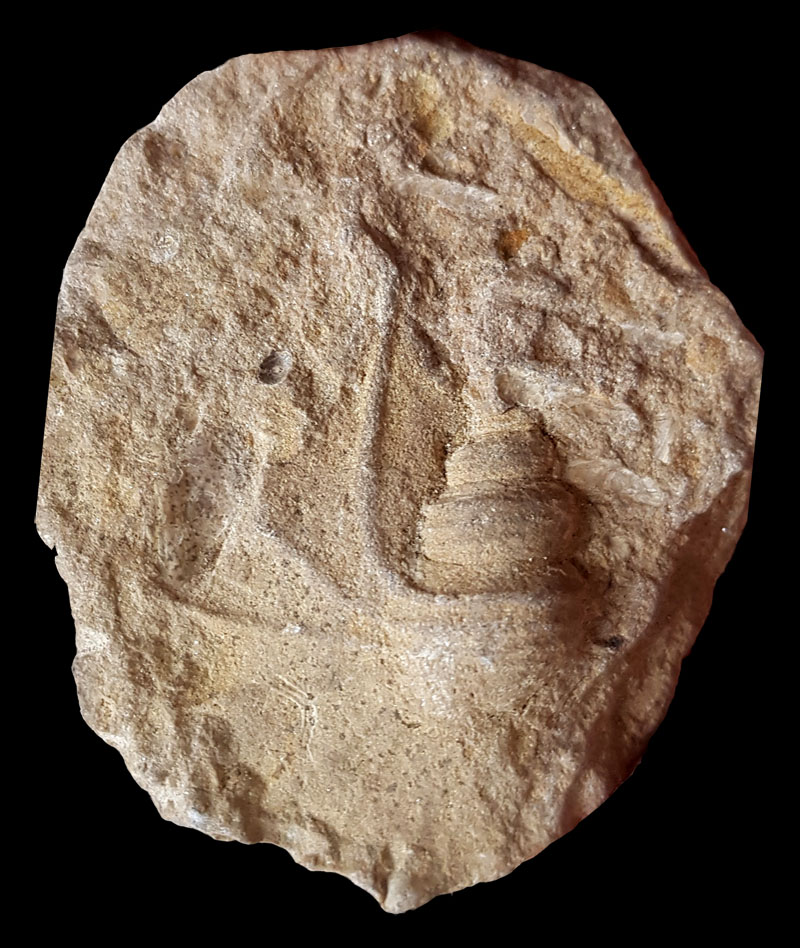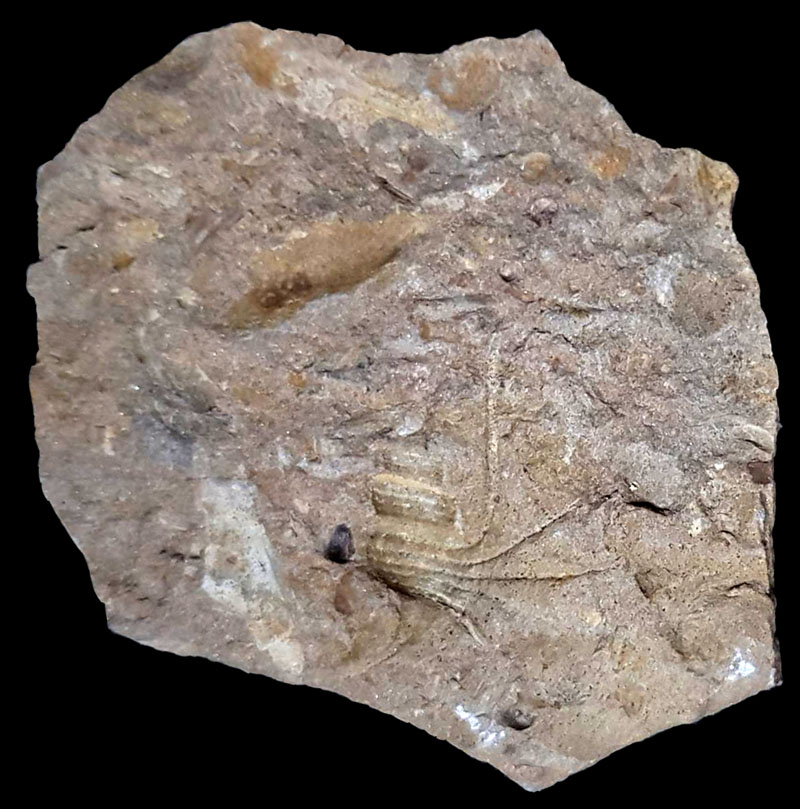Stromboidea
Original Description of Phyllocheilus bentleyi by Morris & Lycett, 1851:
- "Testa turrita, anfractibus convexis, costis transversalibus (4); anfractu ultimo permagno, et costato; labio externo palmato digitis quinque divaricatis; canali obliquo elongato."
Locus typicus: Stonesfield slate, Collyweston, Northamptonshire County, East Midlands Region, England
Pteroceras Bentleyi Morris & Lycett, 1851, pl. III, fig. 15, 15a
Pteroceras Bentleyi var. Morris & Lycett, 1851, pl. III, fig. 16
Etymology: named after John F. Bentley, Esq., of Stamford
Synonymy and History
1888
Description of Malaptera bentleyi by Hudleston, 1888, p. 101:
- "Shell turrited, spiral angle rather convex, apex blunt. Whorls angular and tumid; posterior third of each whorl marked with very fine spiral lines, for the most part scarcely visible; the anterior two-thirds carries four strong spiral lines. Body-whorl moderately large, and nearly equal to the length of the spire. It is ornamented by six strong spirals, from which the digitations of the wing arise. The wing embraces a very considerable portion of the spire. The posterior digitations are the strongest and also the widest apart, the first one being bent upwards, so as to form an angle of about 10° with the axis of the spire and nearly straight; the three anterior digitations are less strong, and project much less farther from the edge of the palmated portion of the wing; they are bent downwards in an increasing ratio. The anterior portion of the wing is ornamented by numerous fine lines. The principal digitations are six, but a subordinate seventh occurs. The aperture is short and nearly quadrate; the six or seven furrows of the wing, corresponding to the digitations, radiate from the outer lip, and the posterior furrows communicate directly with the aperture. The canal is very wide at first, but tapers gradually to a tolerably fine groove, as the anterior spine, or canal-sheath is bent back almost in the form of a sickle."
- "Length of a full-sized specimen 32 mm. Ratio of width to length 46:100. Spiral angle 36°."
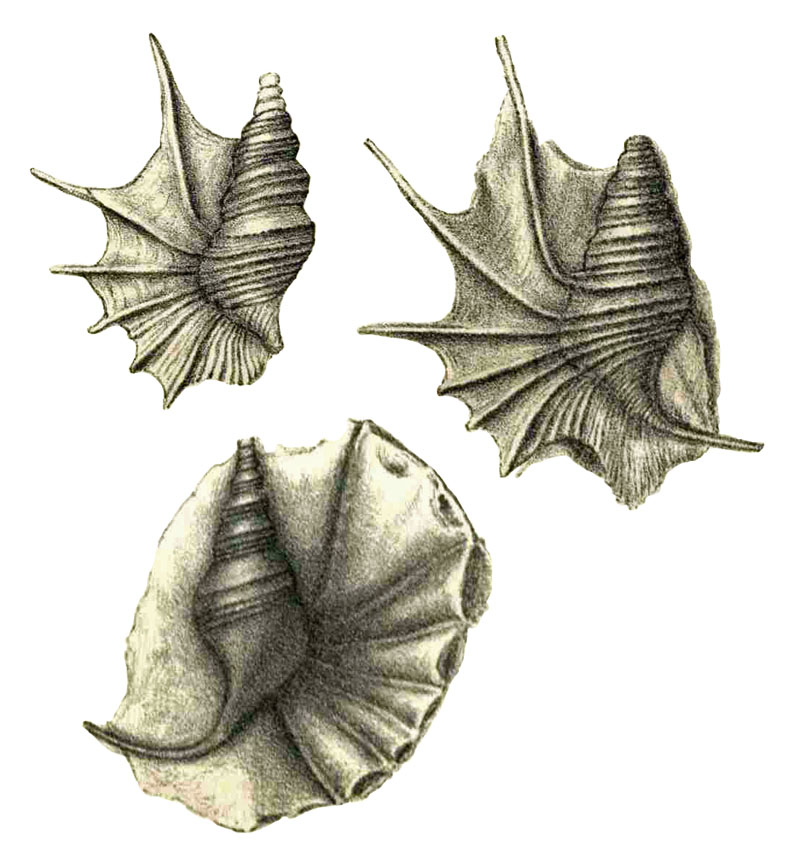
Malaptera bentleyi in Hudleston, 1888, pl. 3, fig. 1 a, b, c
Comments Hudleston, 1888:
- p. 101: "This is an Inferior-Oolite species described by Morris and Lycett as from the Great Oolite; but no similat is known in the Great Oolite of this country."
- p. 102: "Relations and Distribution. — This species is of considerable interest as probably the oldest Malaptera known. The Collyweston Slate cannot well be higher than the middle part of the Murchisonae-zone. Poor specimens are occasionally obtained from the neighbouring Lincolnshire Limestone, but the species has probably not been found out of the Stamford district. It is by no means uncommon at Collyweston."
Hudleston, 1888, p. 101 cited
- 1851 Pterocera Bentleyi, Morris and Lycett. Great Ool.-Moll., p. 15, pl. iii, figs. 15, 15a
- 1854 - - - Morris, Catalogue, p. 274.
- Cf. also Chenopus Pictaviensis, D'Orbigny. Piette, Cont. de la Pal. Franc., pl. xiv, fig. 9, and pl. xix, figs. 10 and 11.
....
Original Description of Malaptera bentleyi var. neglecta by Hudleston, 1888, p. 102:
- "This differs from the more usual form, (1) in being smaller, (2) the whorls of the spire being rather more angular and the ornamentation finer; (3) the posterior digitation more recurved upon the spire; (4) the anterior digitations scarcely perceptible."
Malaptera bentleyi var neglecta in Hudleston, 1888, pl. 3, fig. 2
Hudleston, 1888, p. 102 cited
- Cf. Morris and Lycett, Great. Ool. Moll., pl. iii, fig. 16.
Phyllochilus bentleyi var. neglecta (Hudleston); Bajocian, Jurassic; Collyweston, Northamptonshire, England; Undifferentiated Type; Coll. Sedgwick Museum of Earth Sciences, University of Cambridge J.6613; Copyright Sedgwick Museum of Earth Sciences
Specimens from private collections
Phyllocheilus bentleyi (Morris & Lycett, 1851); Bajocian, Jurassic; England; Coll. Duncan Stephens
Phyllocheilus bentleyi (Morris & Lycett, 1851); Bajocian, Jurassic; England; Coll. Duncan Stephens
References:

